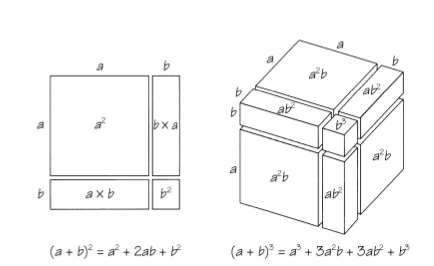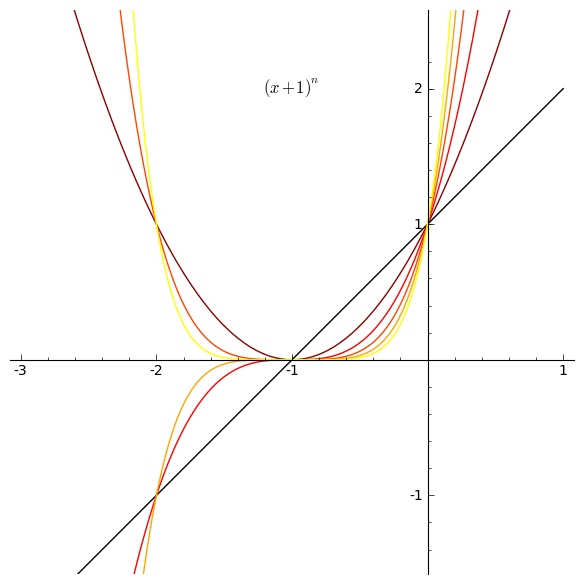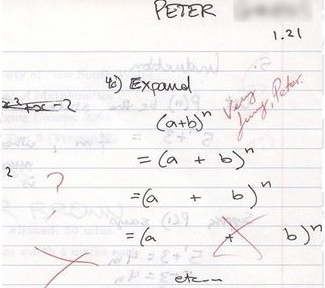
The binomial theorem gives the values of the coefficients of the expansion of:
![]()
where ![]() is any positive integer. (Newton gave the formula for any rational
is any positive integer. (Newton gave the formula for any rational ![]() .)
.)
The picture above shows the expansions for ![]() and
and ![]() .
.
The coefficients are the same as the rows of Pascal’s triangle.
![]() is multiplied out by choosing one number from each bracket.
is multiplied out by choosing one number from each bracket.
There is one way of choosing ![]() — choosing
— choosing ![]() in each bracket, similarly one way of choosing
in each bracket, similarly one way of choosing ![]() .
.
There are ![]() ways of choosing
ways of choosing ![]() — one for each bracket the
— one for each bracket the ![]() is chosen from.
is chosen from.
These are combinations of ![]() elements, (in the strict mathematical sense of “combination”,) in which
elements, (in the strict mathematical sense of “combination”,) in which ![]() identical elements
identical elements ![]() and
and ![]() identical elements
identical elements ![]() occur, where
occur, where ![]() .
.
The number of them is given by ![]() .
.
(![]() is defined as
is defined as ![]() , so that the formula gives the right answer for the number of occurrences of
, so that the formula gives the right answer for the number of occurrences of ![]() and
and ![]() .)
.)
So now we have the binomial expansion:
![Rendered by QuickLaTeX.com \[(a+b)^n=\sum_{\alpha+\beta=n} \frac{n!}{\alpha!\beta!} a^\alpha b^\beta\]](https://www.adamponting.com/wp-content/ql-cache/quicklatex.com-cde123033939794f8d7a9c8a51c6b12d_l3.png)
For example,
![Rendered by QuickLaTeX.com \begin{align*} (a+b)^5&=a^5+\frac{5!}{4!1!}a^4b+\frac{5!}{3!2!}a^3b^2+\frac{5!}{2!3!}a^2b^3+\frac{5!}{1!4!}ab^4+b^5\\[8pt] &=a^5+\frac{5\times4}{4}a^4b+\frac{5\times4}{2}a^3b^2+\frac{5\times4}{2}a^2b^3+\frac{5\times4}{4}ab^4+b^5\\[8pt] &=a^5+5a^4b+10a^3b^2+10a^2b^3+5ab^4+b^5\\ \end{align*}](https://www.adamponting.com/wp-content/ql-cache/quicklatex.com-161d217adc4cb088e1f1b1cfefb03ec6_l3.png)
![]()
![]() is usually written
is usually written ![]()
![]()


